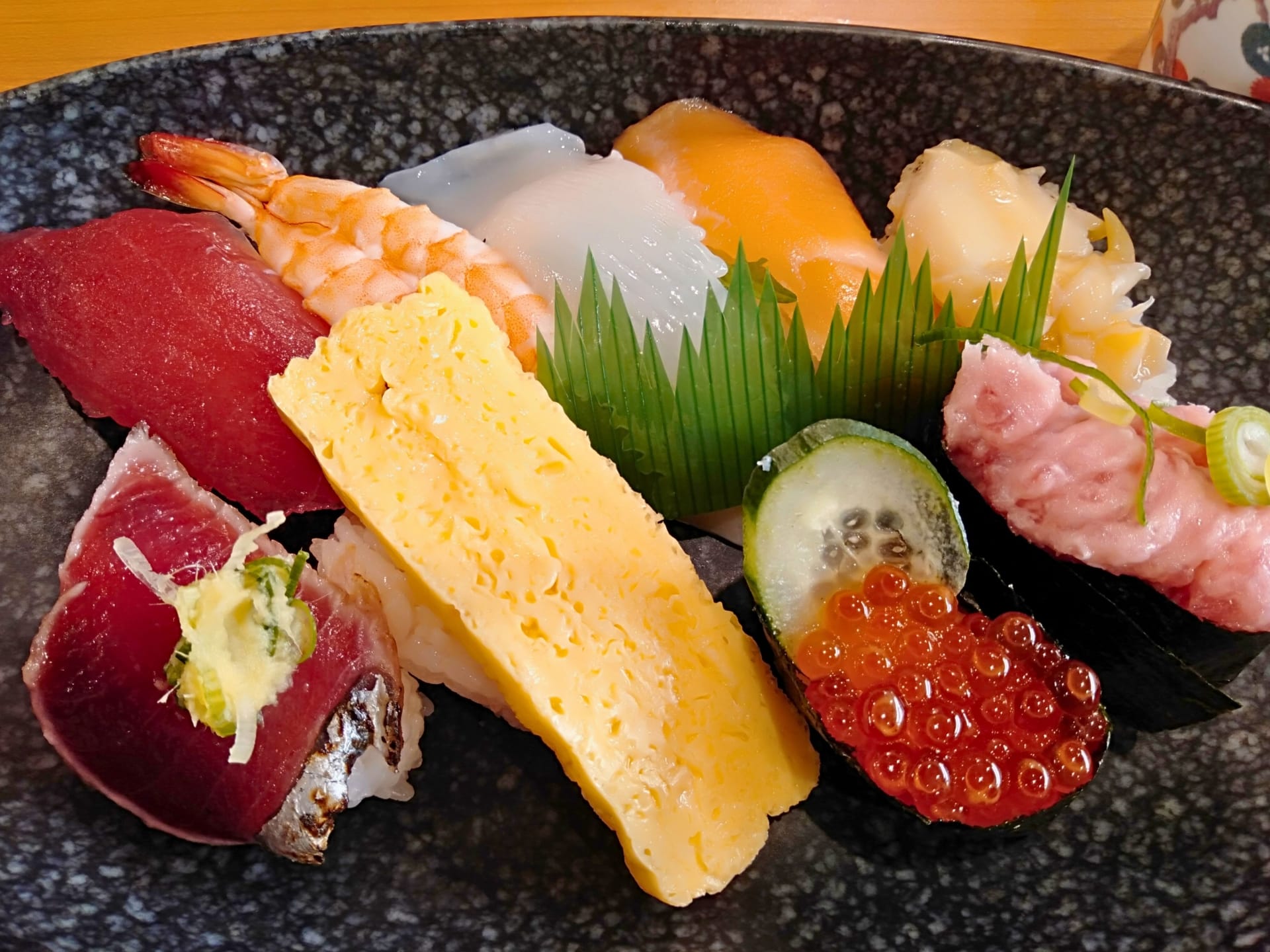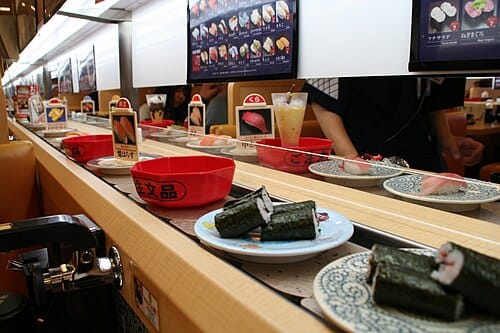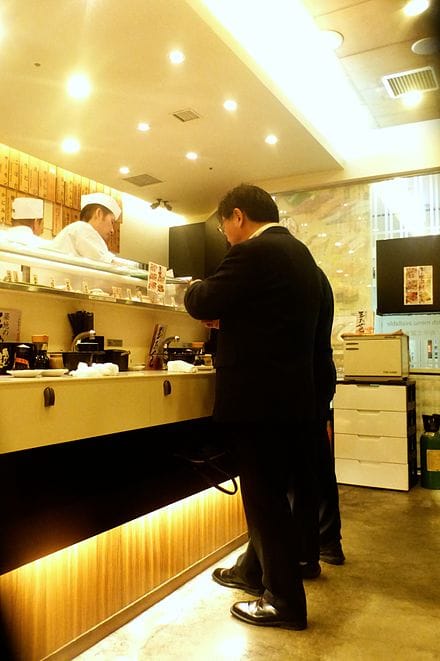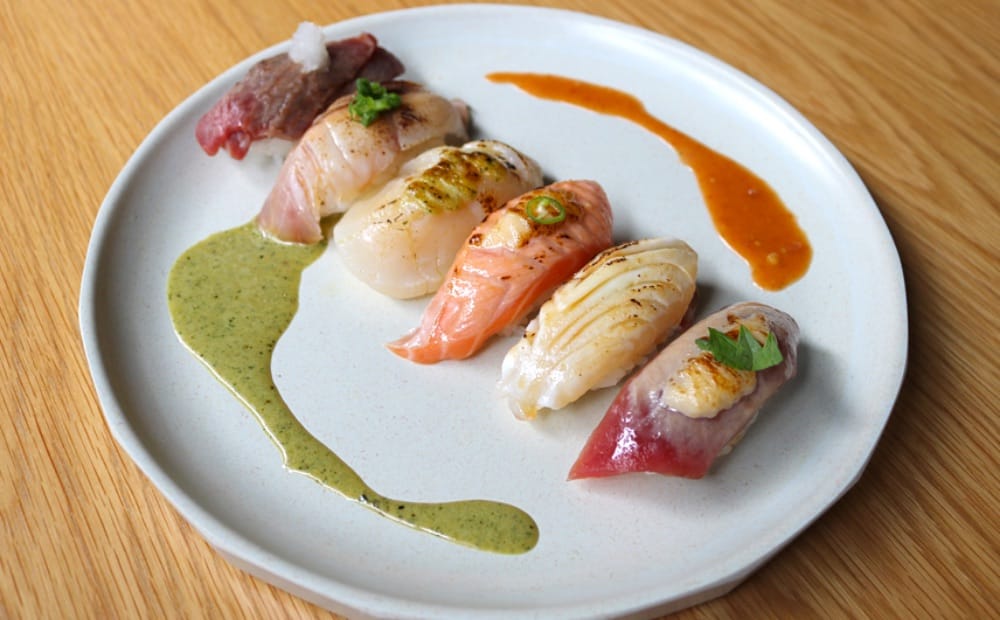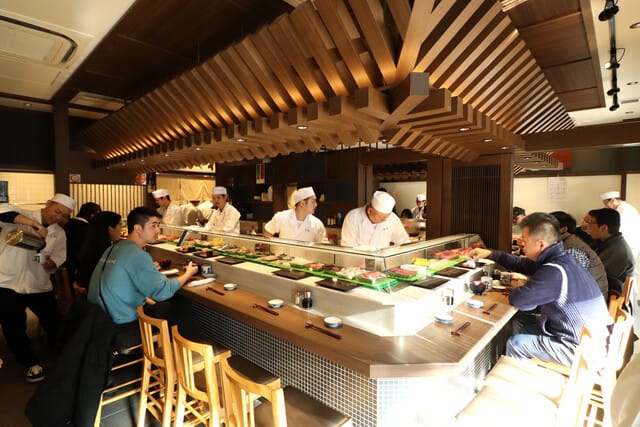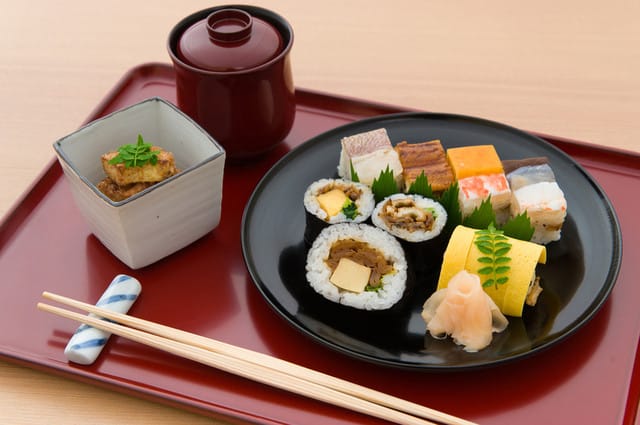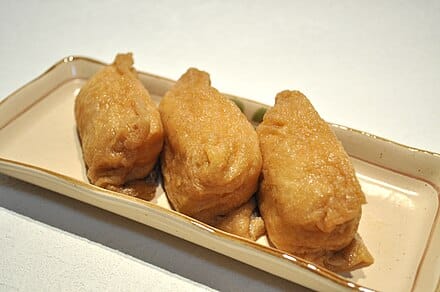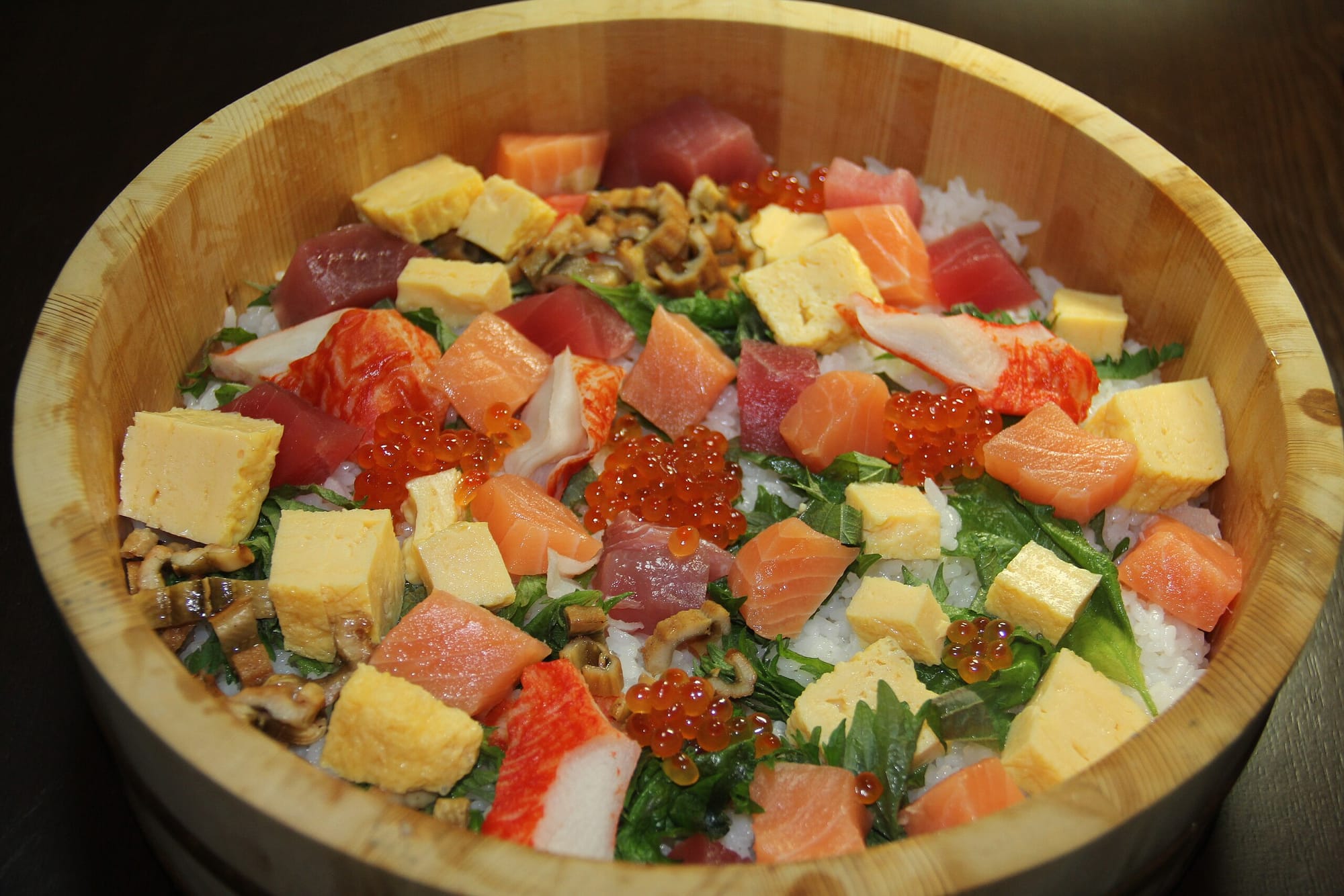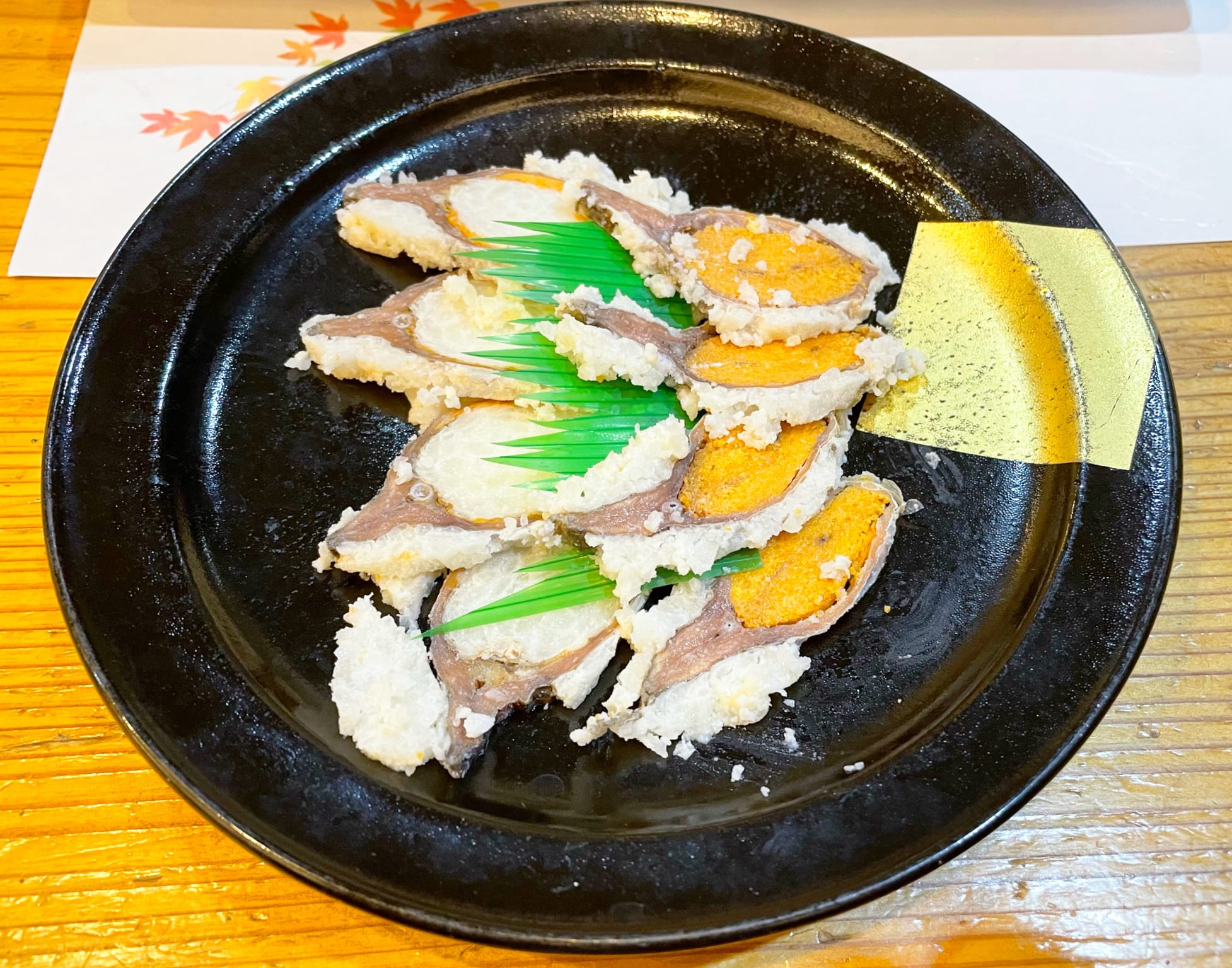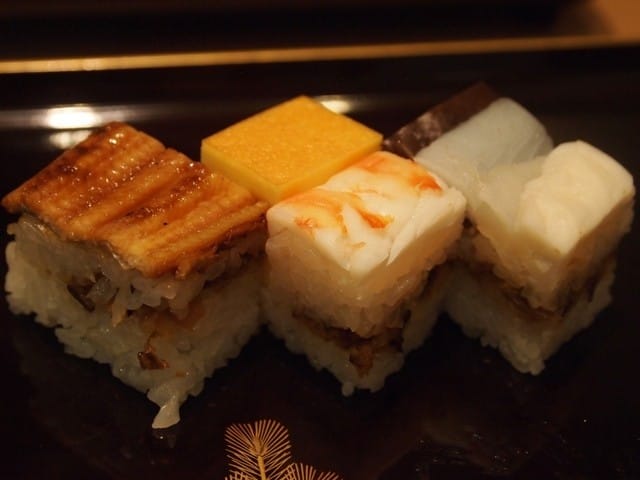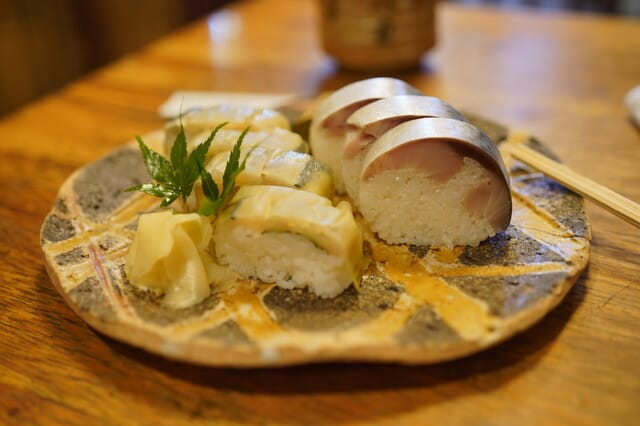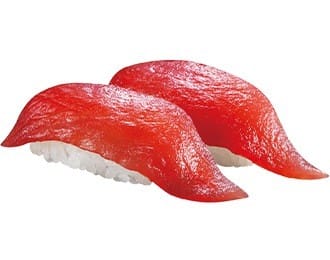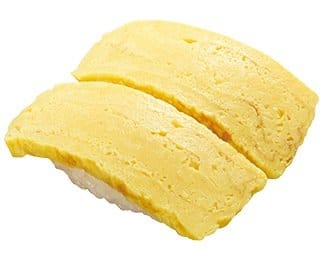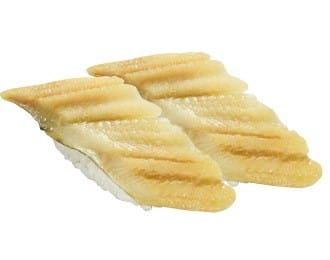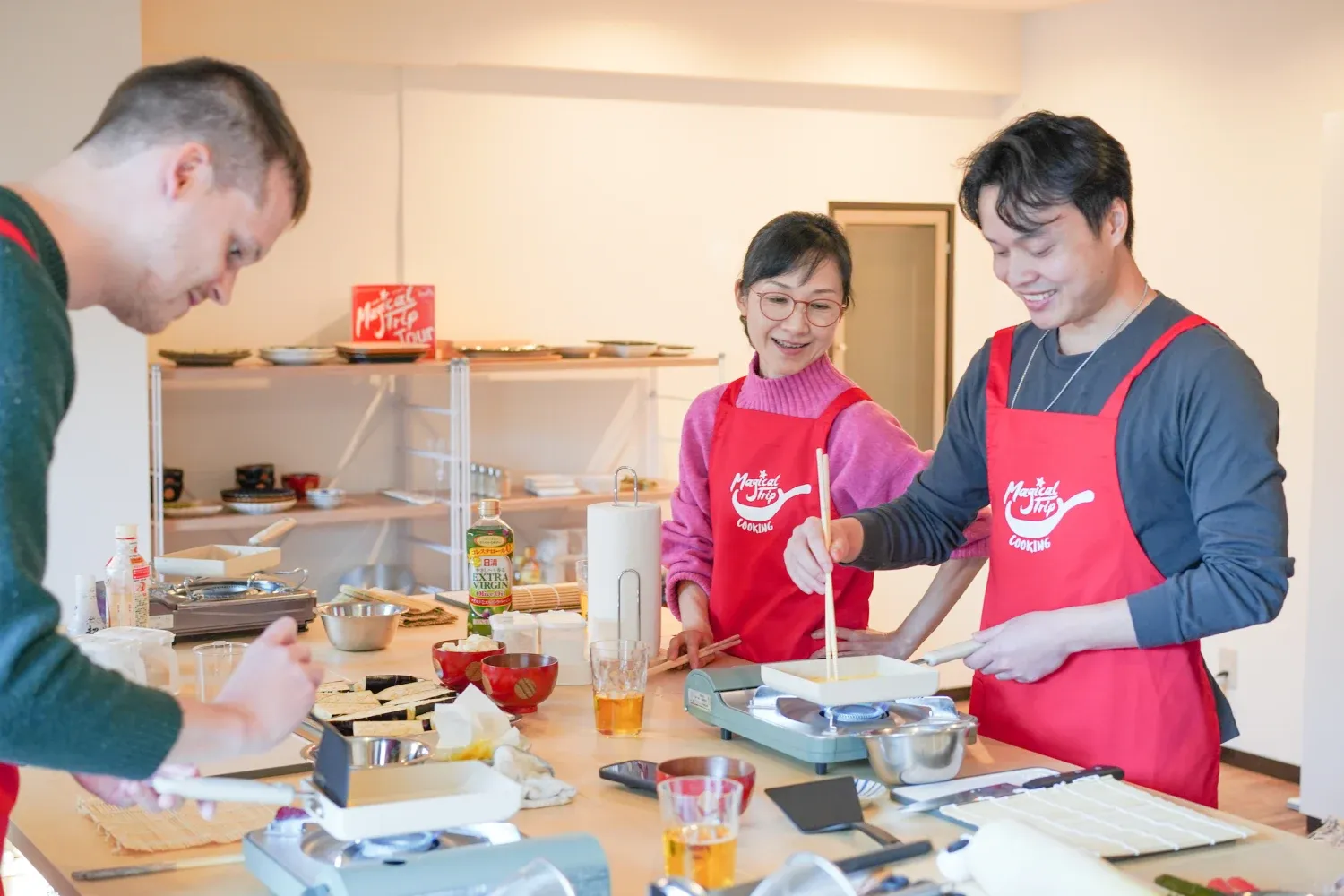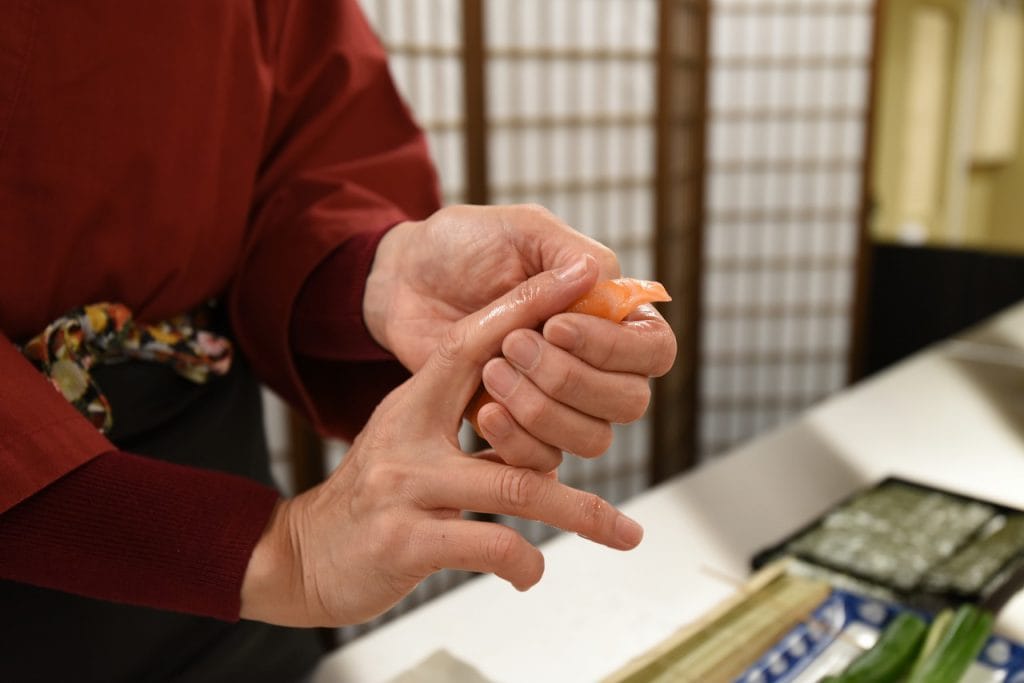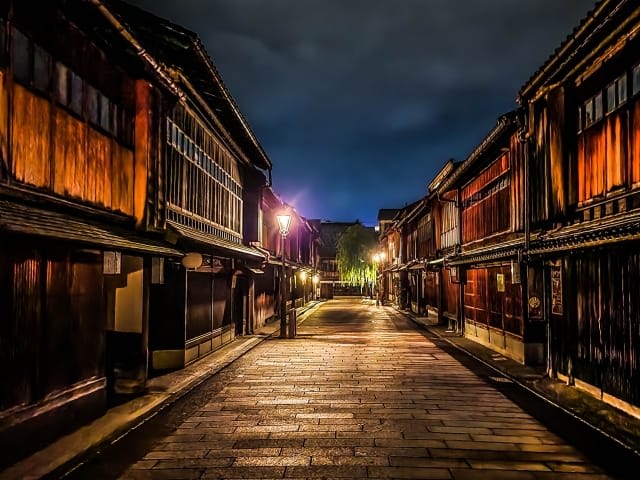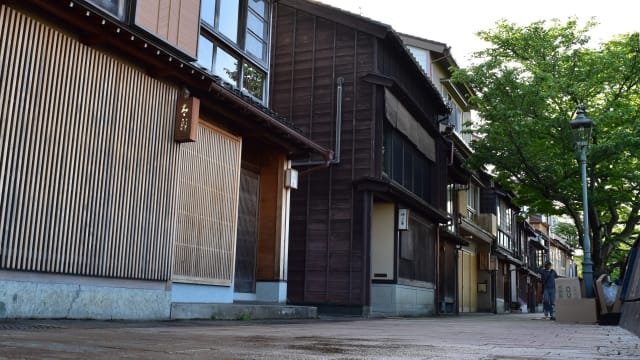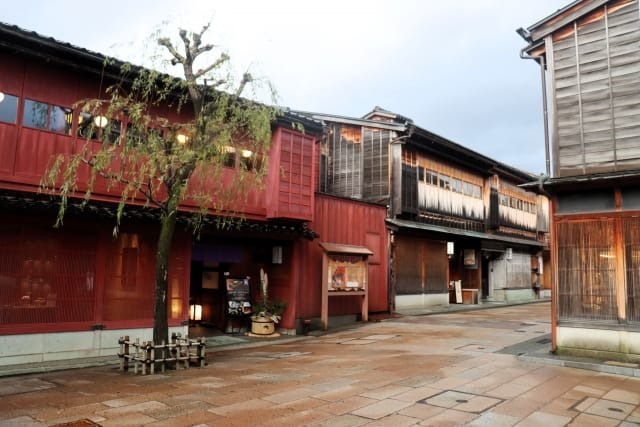The World of Sushi in Japan: The Perfect Guide for Foreigners
As you may know, Tokyo has the highest number of Michelin-listed restaurants in the world. It's undoubtedly one of the greatest food cities globally.
Many locals born and raised in Tokyo naturally love food, but I take pride in being one of those who especially cherish it, even if I say so myself.
Tokyo is an incredibly international city where you can enjoy excellent cuisine from various countries. There are also numerous fusion dishes where Japanese people have Japanized international cuisines.
Having visited a wide range of such restaurants, sushi is undoubtedly one of the topics I'm most passionate about.
I've been to various sushi restaurants across Japan.
While sushi represents Japanese food culture and is popular worldwide, did you know that there are different types of sushi and restaurant styles?
I fell in love with sushi at a conveyor belt sushi restaurant my family took me to as a child.
Even now, I frequently take my kids to reasonably priced local sushi restaurants, and on special occasions, I visit high-end sushi restaurants. I'm always touched by the sight of skilled chefs hand-pressing fresh toppings on sushi rice right in front of me. The moments I eat sushi are moments when I'm grateful to be living in the city of Tokyo.
For Japanese people, sushi is both a casual food and something to enjoy on special occasions. There are various types of sushi and sushi restaurants, and we choose them according to our purposes.
In this article, I'll introduce not only basic information about sushi and its different types but also regional variations, local etiquette surrounding sushi, and tours where you can fully experience sushi culture in Japan, sharing my personal experiences.
Please check out this sushi guide and feel the depth of Japanese sushi culture!

Why Japanese People Love Sushi
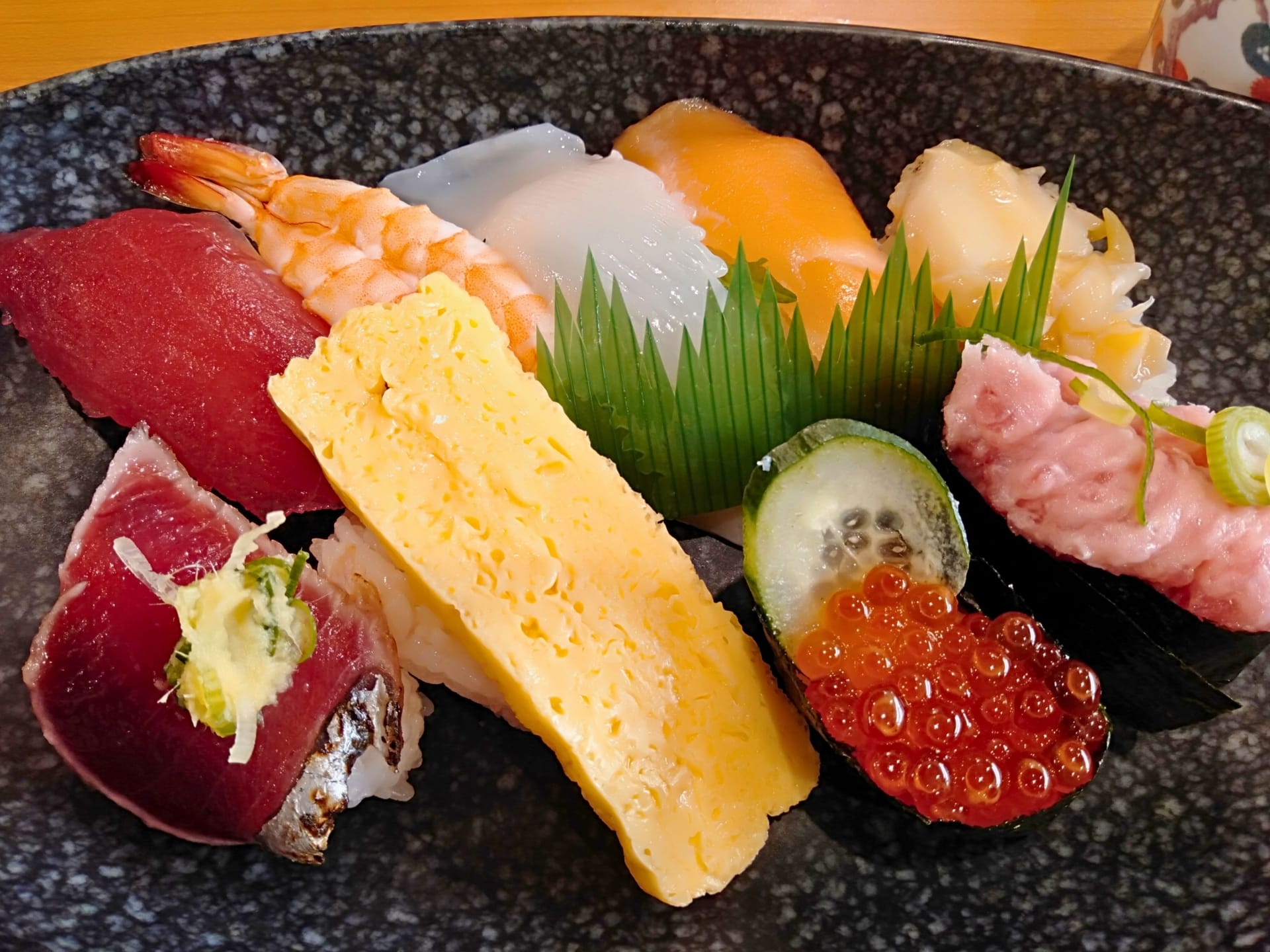
There are many reasons why sushi is beloved by Japanese people, but what I especially resonate with is that "we often eat it on celebratory occasions, and it elevates our mood."
I always go for sushi on anniversaries with my family or celebrations with friends. When we all gather around delicious sushi, the conversation naturally flows, and we feel happy.
Stemming from this purpose of eating sushi, there are many delicious and high-quality sushi restaurants, with 48 sushi restaurants in Tokyo alone being selected in the 2024 Michelin Guide.
I also feel that sushi, consisting of rice and seafood that Japanese people love, with its various types, is loved at the DNA level by Japanese people. My kids adore sushi too, and when we go to a conveyor belt sushi restaurant, they gleam with excitement as they grab plates one after another.
Seeing children happily eat sushi even if they dislike seafood makes me feel that the appeal of sushi is being passed down across generations.
Sushi is a traditional Japanese food loved worldwide, and it's a food culture that Japanese people take pride in.
Styles of Sushi Restaurants in Japan
When we say "sushi restaurant," there are various types in Japan. Here, I'll introduce four styles of sushi restaurants and also touch on sushi that can be casually purchased at supermarkets and convenience stores.
Sushi Restaurant Style 1: Sushi-ya (High-end Sushi Restaurants)
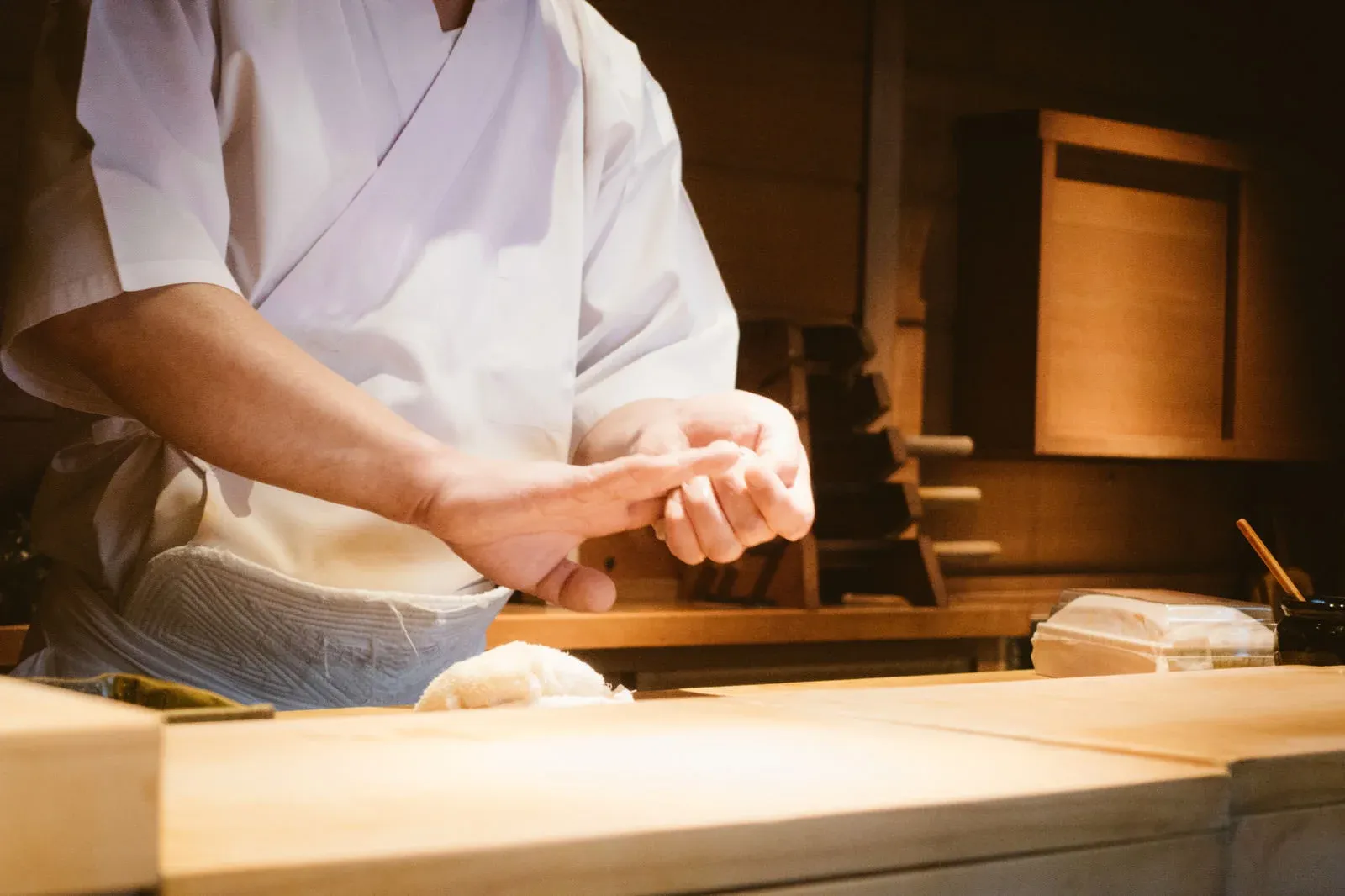
Dining at a high-end sushi restaurant is a special experience even for Japanese people. The highlight of sushi-ya is being able to witness the chef's artistry up close from across the counter.
I enjoy conversing with the chef and listening to their explanations about the toppings. The chef's words convey their dedication to sushi, making the sushi taste even more delicious.
While high-end sushi restaurants are pricey, I believe the experience is worth much more than the cost. However, note that many of these restaurants require reservations, and it can be challenging to get a table at popular places on short notice.
Omakase Course at High-end Sushi Restaurants
Ordering a course menu is usual at upscale sushi places. Among them, the "Omakase" method lets you eat sushi prepared with seasonal ingredients by letting the chef choose the toppings. Recall the Japanese term "Omakase" when you visit these sushi places.
Sushi Restaurant Style 2: Conveyor Belt Sushi
Source: Wikipedia
As with many Japanese, my passion for sushi began at a conveyor belt restaurant.
I take my kids there all the time even now, and I get excited just looking at the vibrant sushi dishes on the conveyor belt. My favorites, shrimp and salmon, are fast approaching.
Many restaurants nowadays have a conveyor belt system that delivers the sushi you order, so you can eat as much of your favorite as you like.
There are many tasty conveyor belt sushi places, however the quality might not be as great as sushi-ya.
One benefit is that there's no need to make reservations, even though you might have to wait in line. Laughing heartily with loved ones while staring at the conveyor line is fun. Sushi restaurants with conveyor belts are busy and cheerful places. They are, for me, a treasured location where I may discover little pleasures in everyday life.
Sushi Restaurant Style 3: Standing Sushi Bars
Source: Wikipedia
While as a child I always went for conveyor belt sushi, I now suggest standing sushi bars.
There are rows of standing sushi bars employing fresh ingredients in Tsukiji (now Toyosu), the former fish market district of Tokyo. Genuine sushi at affordable pricing is what draws people to these sushi establishments.
These sushi restaurants are very informal and approachable; no reservations are usually needed and the standing style frequently results in a speedier turnover of customers.
Sushi Restaurant Style 4: Sushi Bars
Source: KINKA official website
Sushi bars offer a modern and stylish ambiance. They often have an extensive drink menu featuring sake and wine, and some serve creative sushi. While not as expensive as sushi-ya, the prices are relatively high.
You can often walk in without reservations, but popular places may have a wait. I frequently visit sushi bars with friends, and leisurely enjoying sushi in the chic atmosphere offers a different experience from other sushi restaurants.
Supermarket and Convenience Store Sushi
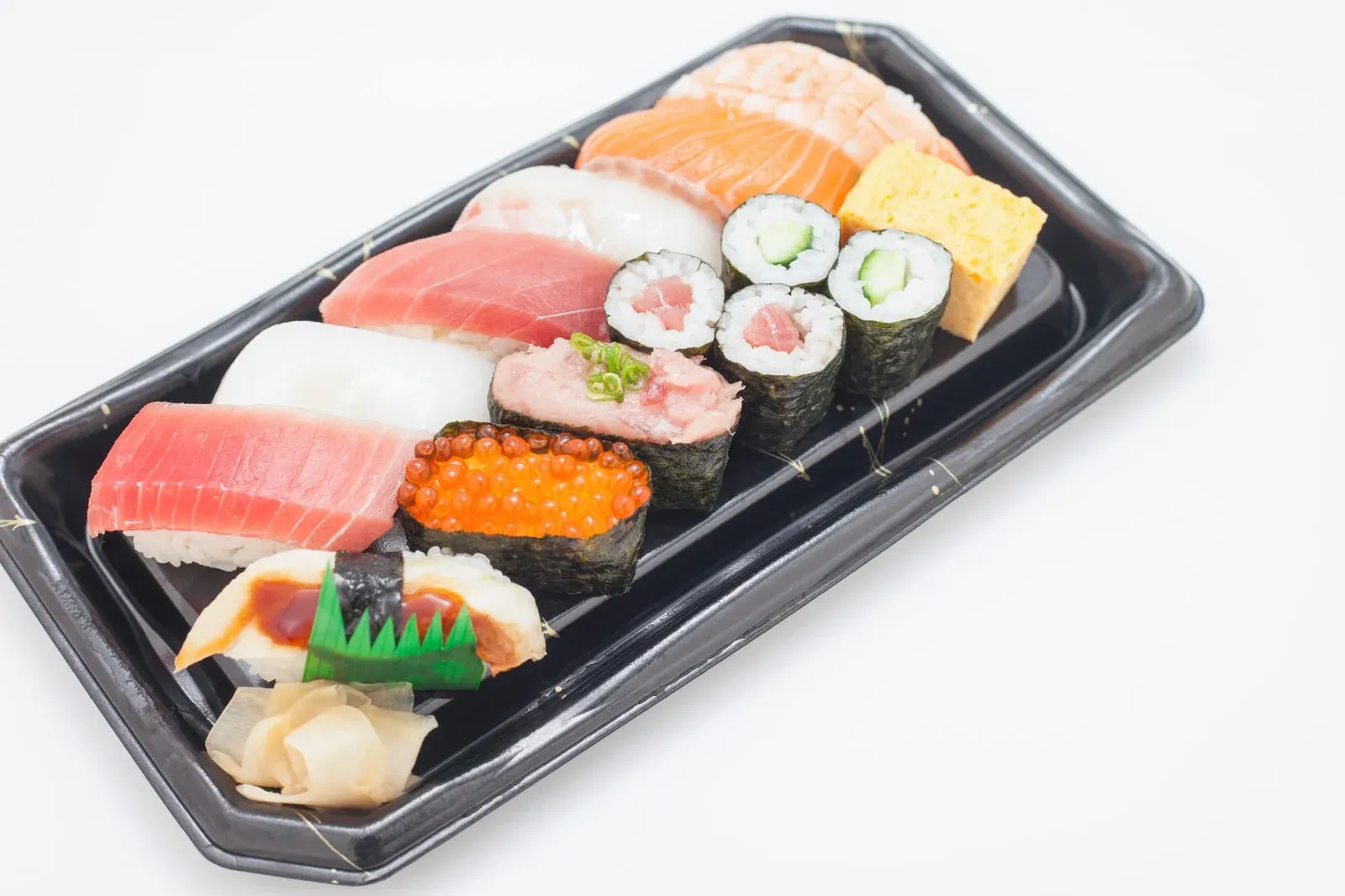
Did you know that you can buy sushi at supermarkets in Japan?
While the ingredients are limited, convenience stores sometimes sell rolled sushi. The taste and prices vary greatly among supermarkets, but I personally think the sushi from Aeon, a major Japanese supermarket chain, is quite delicious.
While I can't highly recommend convenience store sushi rolls, they're sufficient for a light snack while shopping. If you want to casually enjoy reasonably tasty sushi rolls, be sure to check out convenience stores too.
Differences Between High-end and Casual Sushi Restaurants
Source: Tabelog by Daiwa Sushi
High-end sushi restaurants pay close attention to the freshness of fish and pre-seasoning, and the chefs' hand-pressing techniques are exquisite, resulting in truly delicious sushi. On the other hand, conveyor belt sushi restaurants serve the role of providing inexpensive sushi.
In terms of preparation and workload, there is a vast difference between high-end and casual sushi restaurants. At high-end places, traditional techniques from the Edo period, such as tying hirame (flat fish) or marinating tuna, are employed; it's not just slicing fish and placing it on rice.
In contrast, at many conveyor belt sushi restaurants, you could say that machines essentially just place the toppings on the sushi rice.
In terms of ingredient quality, conveyor belt sushi undoubtedly falls short compared to high-end places. However, that doesn't mean the ingredients at conveyor belt sushi restaurants lack freshness. Japan has the world's best distribution and refrigeration technologies for seafood, so the freshness is high at any sushi restaurant, allowing you to enjoy delicious sushi even at conveyor belt places.
Additionally, at conveyor belt sushi restaurants, the toppings may not be the exact variety their names suggest. For cost reasons, they may use smaller types of tuna like “mebachimaguro” instead of the premium “kuromaguro” tuna that's most suitable for sushi. Since they're both tuna varieties, it's considered acceptable.
High-end sushi restaurants offer an extensive drink menu, allowing you to leisurely pair sushi with alcohol. On the other hand, casual sushi places are more grab-and-go, which can be a downside if you want to linger.
However, it's not about which is superior; it's essential to understand their respective merits. I enjoy both high-end sushi restaurants to savor the chefs' artistry and casual places like conveyor belt sushi to casually enjoy sushi.
For travelers, I recommend high-end sushi restaurants if you want to savor authentic sushi at a leisurely pace and casual sushi places like conveyor belt sushi restaurants if you want to enjoy sushi casually.
Various Types of Sushi in Japan
Japan has an array of different sushi types. Here, I'll introduce some representative varieties.
By the way, when the word "sushi" is preceded by another word, the pronunciation changes to "zushi." For example, instead of "Nigiri Sushi," it's pronounced "Nigirizushi." Be sure to remember this.
Sushi Type 1: Nigirizushi (Hand-Pressed Sushi)
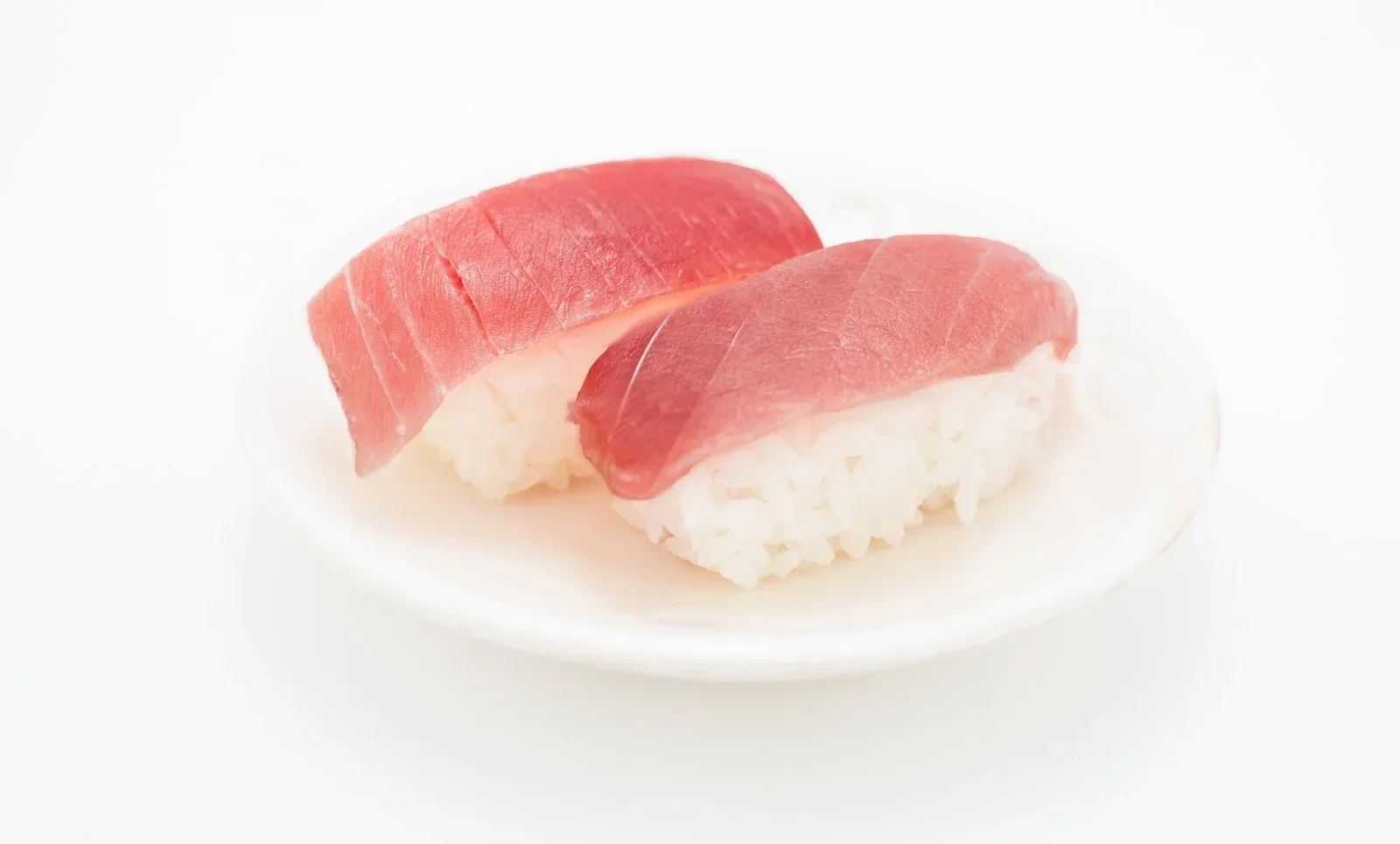
The most often consumed kind of sushi is called nigirizushi, which is made using hand-pressed sushi rice and seafood toppings.
Bite-sized and topped with a variety of seafood, including shrimp, salmon, and tuna, it's simple to eat. These days, nigirizushi comes in variations with pork or ham toppings in addition to raw fish.
Sushi Type 2: Makizushi (Rolled Sushi)
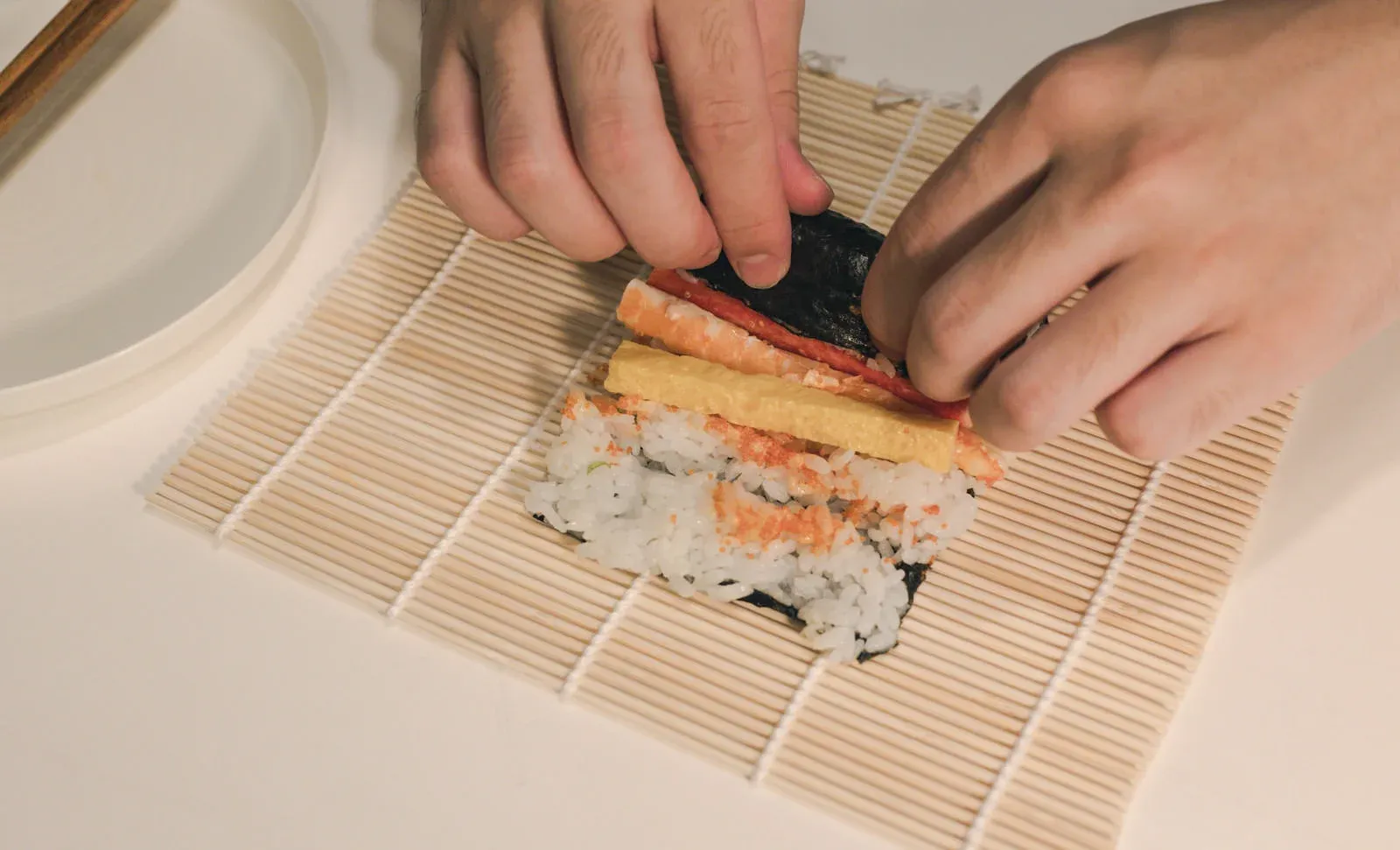
Makizushi is sushi rice and toppings rolled in seaweed. Depending on the rolling method, there are thick rolls, thin rolls, inside-out rolls, etc. It's a type of sushi that's easy to make at home. The extra-long Ehoumaki roll is also known as a seasonal food for events.
While sushi restaurants focusing on makizushi are common overseas, like the California Roll in the US, such restaurants are rare in Japan, where makizushi is typically served as a course or an accent.
Sushi Type 3: Gunkan (Battleship Sushi)
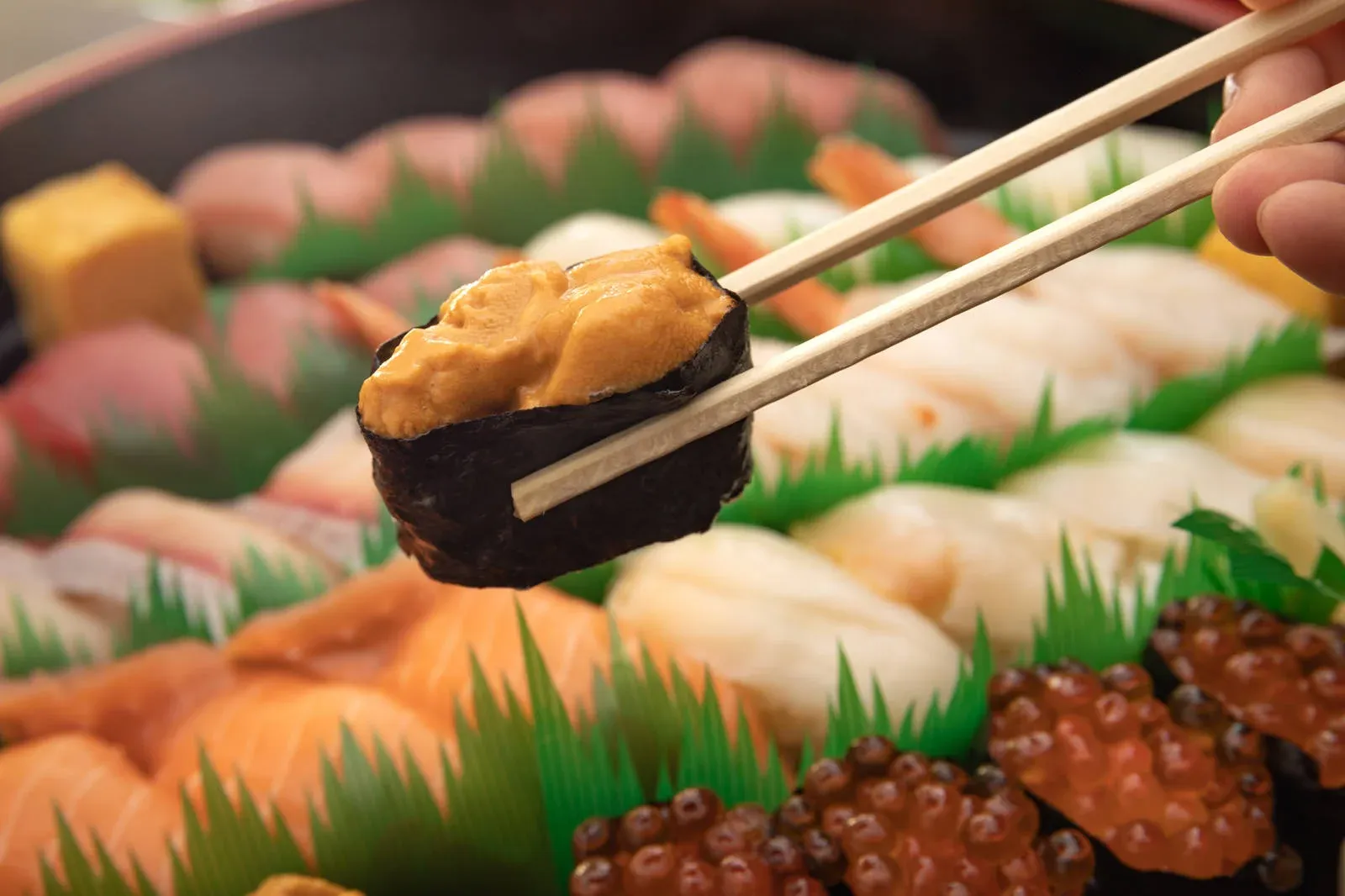
Gunkan is sushi rice wrapped in seaweed with toppings placed on top, resembling a battleship, hence the name. Popular toppings include uni (sea urchin), ikura (salmon roe), and negitoro (minced tuna with scallions).
Sushi Type 4: Oshizushi (Pressed Sushi)
Source: Tabelog by Yoshinosushi
Oshizushi is sushi made by layering sushi rice and toppings in a box, then pressing it with a weight. This type of sushi developed in the Kansai region, often featuring ingredients like mackerel and salmon. It's characterized by being cut into rectangular shapes for serving.
Sushi Type 5: Inarizushi
Source: Wikipedia
Inarizushi is sushi rice stuffed into a pouch made of “aburaage”, which is thin slices of deep-fried tofu. In the Kansai region, it's also called "Oinari-san," and the aburaage is simmered in a sweet and savory sauce.
Sushi Type 6: Chirashizushi
Source: Wikipedia
Chirashizushi is sushi rice topped with various seafood and other ingredients scattered on top. It's often made for cherry blossom viewing parties and celebrations, featuring a colorful and visually appealing presentation. It's also easy to make at home.
Sushi Type 7: Narezushi (The Predecessor of Modern Sushi)
Source: Wikipedia
Narezushi is a preserved food made by fermenting salted fish with rice. It's considered the predecessor of modern sushi but has a distinct sour taste and aroma due to fermentation, differing from the typical image of sushi.
While there are hardly any restaurants serving narezushi in Tokyo, Osaka, or Kyoto, it's still made and passed down in various regions of Japan.
Regional Variations of Sushi in Japan
Sushi in Japan has regional characteristics, which is quite interesting. Here, I'll introduce some representative regional varieties, but there are many more variations across Japan's prefectures.
Local Sushi 1: Edomae Sushi from Tokyo
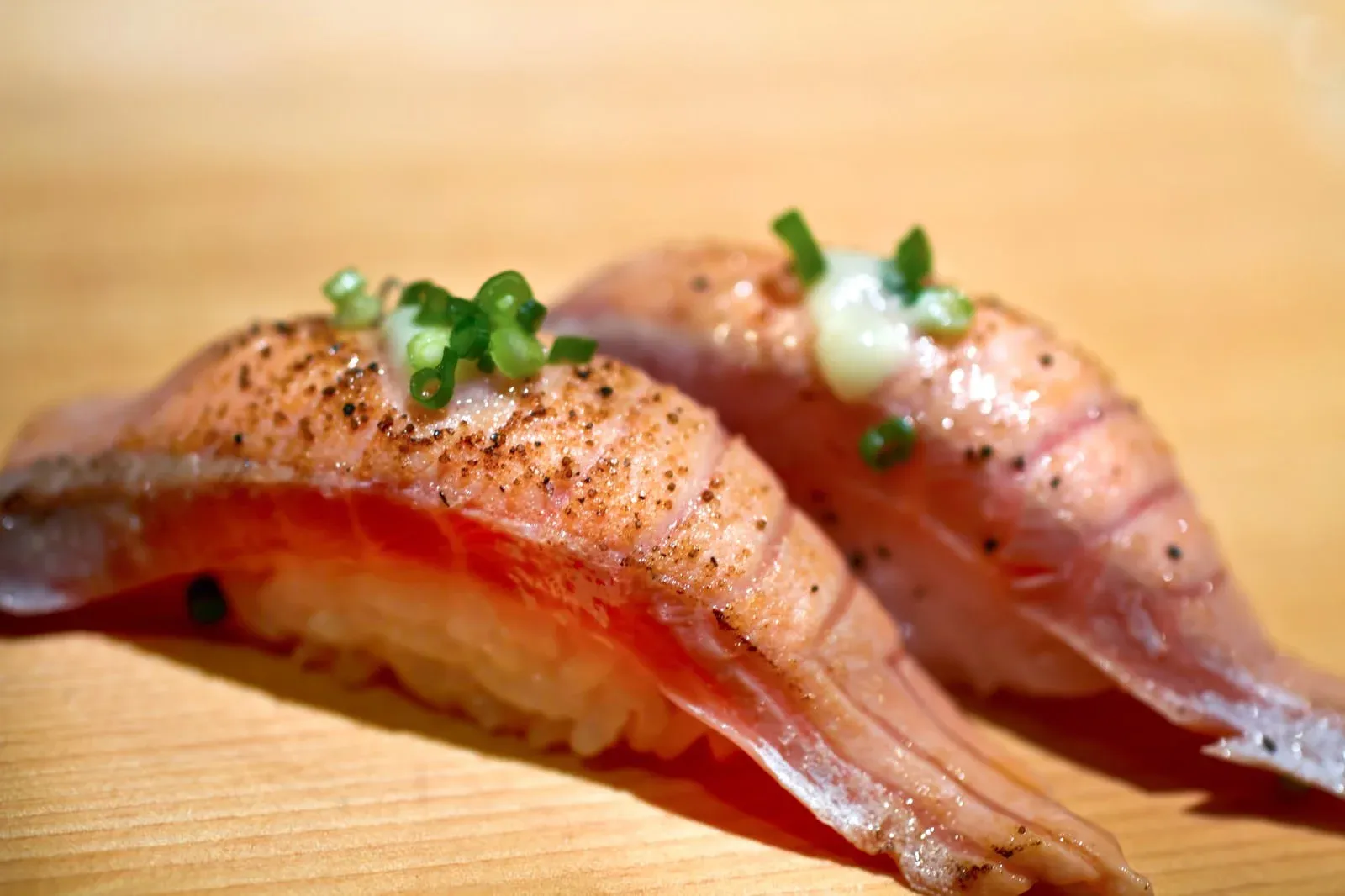
Edomae sushi is characterized by using fresh seafood from Tokyo Bay, such as fish from the Tsukiji market (now Toyosu market).
Nigirizushi is the main focus, with the appeal being simple seasoning. It's unique to Edomae sushi to place large pieces of fish on the sushi rice.
Originally a fast food sold at street stalls during the Edo period, it became popular for being easy to eat. As the name suggests, it has a history dating back to the Edo period and remains a representative sushi style today.
In the past, when fish distribution and refrigeration technologies were lacking, techniques like marinating fish in soy sauce were used to enhance preservation, which is still reflected in the seasoning today.
Local Sushi 2: Osaka's Oshizushi (Pressed Sushi)
Source: Tabelog by urya-momen
Osaka's representative sushi, alongside Tokyo, is oshizushi, where sushi rice and ingredients are packed into a wooden box and pressed with a weight.
Mackerel and salmon are commonly used, and it's also called "pressed sushi," characterized by being cut into rectangular shapes. The seasoning is relatively strong, and there's more rice than typical – very Osaka-like qualities.
Oshizushi has better preservability than Edomae sushi, making it a popular souvenir from Osaka. In fact, when I went to Osaka recently, I was surprised to see oshizushi being sold at Shin-Osaka Station!
Local Sushi 3: Kyoto's Saba Sushi (Mackerel Sushi)
Source: Tabelog by hiro0827
Kyoto's representative sushi is quite similar to Osaka's but features mackerel in a pressed sushi style.
The mackerel is seasoned with vinegar, giving it a distinct flavor. It has a refined taste characteristic of Kyoto, and I personally love mackerel sushi as one of my favorite sushi varieties in the Kansai region.
Popular Sushi Toppings
Next, I'll introduce some of the most popular sushi toppings among Japanese people, categorized into three groups.
Classic Sushi Toppings
Source: Kurazushi
When it comes to classic sushi toppings, tuna is undoubtedly a staple. It's a must-have at sushi restaurants, with the fatty "toro" part being especially popular.
I often start by savoring tuna toro when visiting sushi restaurants. Salmon, with its fatty taste, is also a classic topping.
Sushi Toppings Popular with Children
Source: Kurazushi
The sushi topping popular with children is "tamago" (egg), which has a sweet flavor and is easy to eat. Simple rolled sushi, with each piece being small, is also a favorite among kids.
My kids always loop between tamago sushi and cucumber rolls whenever we visit a sushi restaurant.
Sushi Toppings Popular with Sushi Connoisseurs
Source: Kurazushi
Sushi toppings popular with connoisseurs include uni (sea urchin) and anago (conger eel). Uni has a distinct, rich flavor that is a must for sushi enthusiasts.
Anago, with its fluffy and tender texture, is popular for its sweet and savory soy-based glaze. Aji (horse mackerel) is also favored by sushi connoisseurs for its unique texture and taste.
How to Properly Enjoy Sushi and Etiquette
Next, I'll share tips on how to properly enjoy sushi and etiquette from a Japanese perspective.
How to Fully Enjoy High-End Sushi Restaurants
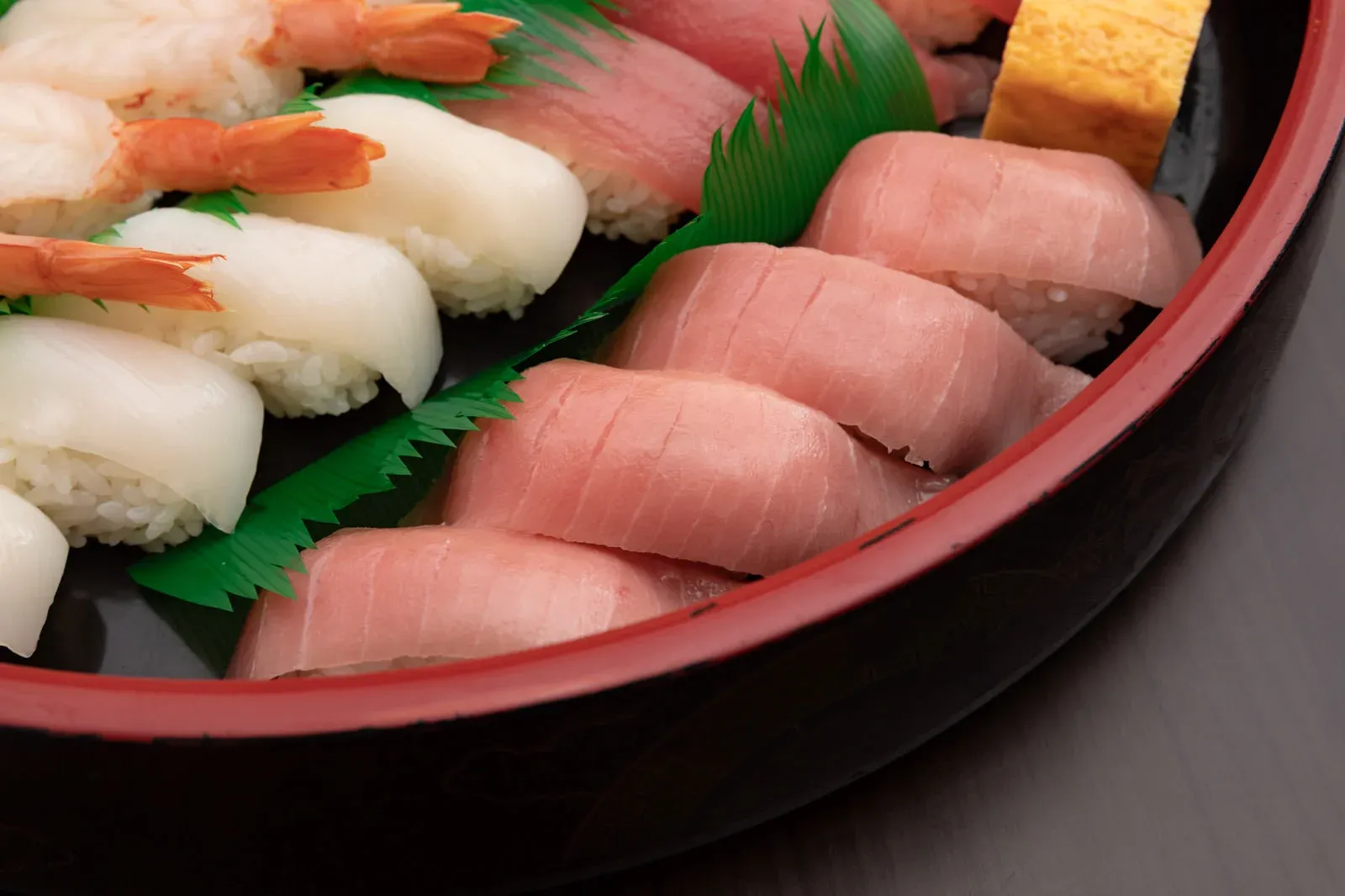
At high-end sushi restaurants, I recommend pairing sushi with Japanese sake. Choosing sake that complements the sushi is part of the enjoyment. If it's a high-end place, consider ordering an appetizer before the sushi course to sample seasonal ingredients.
Ordering "Omakase" is also a quintessential experience at high-end sushi restaurants. The chef will serve you the best ingredients of the day, gradually progressing from delicate to richer flavors.
At conveyor belt sushi restaurants, it's fun to enjoy the various gimmicks. Whether it's ordering via touchscreens, watching sushi delivered on the conveyor belt, or returning plates to play games, there are plenty of unique experiences only found at these casual sushi spots.
Also, you may discover unique sushi creations at conveyor belt restaurants that you'd never find at high-end places. Be sure to try different varieties!
Basic Etiquette at Sushi Restaurants
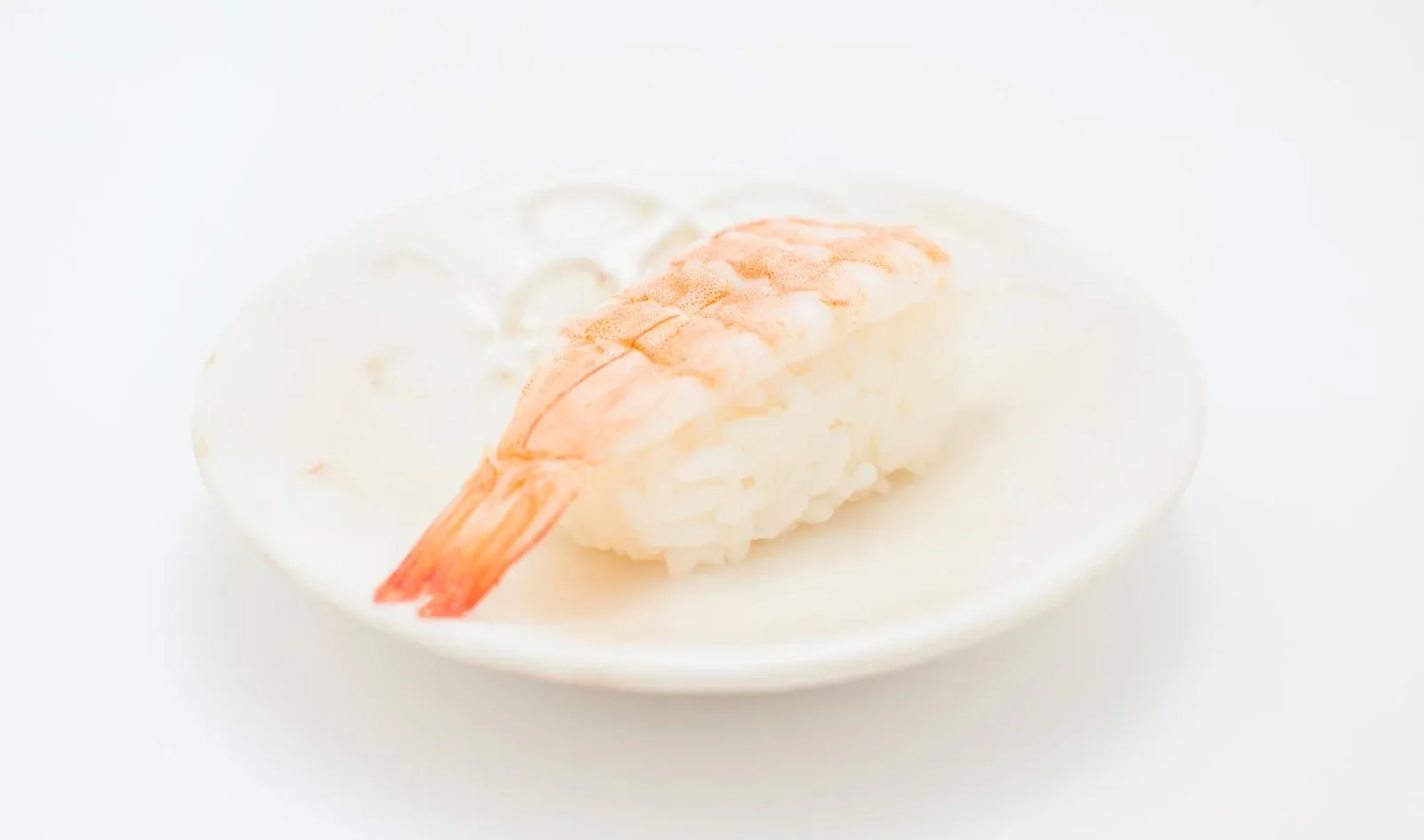
At sushi restaurants, there are some basic etiquette rules. At high-end places, it's customary to eat with your hands, but using the provided chopsticks is also acceptable. Dip only the topping part of the sushi in soy sauce. It's also considered good manners to eat the sushi promptly after being served.
At conveyor belt sushi restaurants, avoid returning sushi you've taken to the conveyor belt.
Tips for Eating Sushi
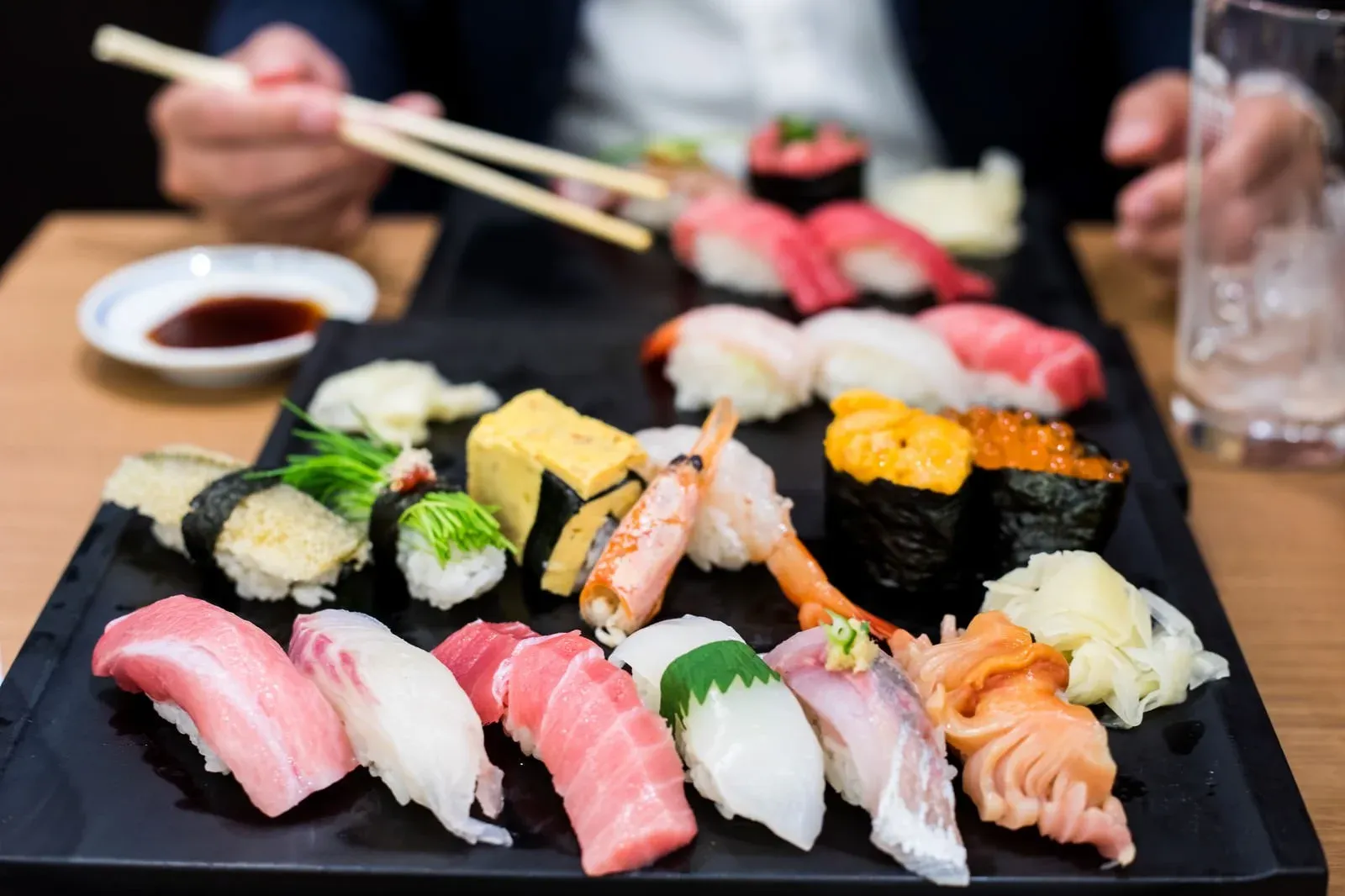
Here are some tips for eating sushi:
Ideally, eat sushi in one bite. Avoid over-dipping in soy sauce. If you're unfamiliar with wasabi, start with a small amount as it can be quite pungent. If you prefer to avoid wasabi altogether, let the sushi chef know by saying "No Wasabi" when you arrive. At conveyor belt sushi places, wasabi is typically provided separately, so it's not an issue.
I also recommend pairing sushi with complementary drinks like green tea or Japanese sake.
Tours to Experience Sushi Culture in Tokyo
Lastly, let me introduce two tours where you can experience sushi culture in Tokyo.
There are two styles of sushi-making tours. One is a "hand-roll sushi" experience, which is easy for anyone to make. It's appealing to learn this in Tokyo and then serve it at parties back home. If you're looking for something casual and fun, especially with children, this type of tour is recommended.
The other is an authentic nigirizushi (hand-pressed sushi) experience. Admittedly, it's difficult to master in one session, but the appeal is witnessing the skills of a sushi chef firsthand and gaining a deeper understanding of sushi culture. This tour is recommended if you want to truly appreciate the artistry behind sushi.
"Sushi & Sake Tasting Cooking Class with a Visit to Local Supermarket in Tokyo" by Magical Trip
Source: Magical Trip
The Advantages of this Tour:
- You can make and eat Japanese dishes like rolled sushi
- Enjoy shopping for ingredients at a local supermarket with your guide
- Vegan and vegetarian-friendly
The Disadvantages of this Tour:
- Does not include visits to famous markets or sushi restaurants
The highlight of this tour offered by Magical Trip is that you can make and eat Japanese dishes like rolled sushi and enjoy shopping for ingredients at a local supermarket with your guide. It's vegan and vegetarian-friendly too.
This tour does not include visits to famous markets or sushi restaurants. However, at around $90 USD with meals included, it provides good value.
The cooking class even has a kids' play area, making it family-friendly. If you want to enjoy experiencing sushi culture locally during your Tokyo trip, this is a recommended tour.
Click here for more details: "Sushi & Sake Tasting Cooking Class with a Visit to Local Supermarket in Tokyo"
"Toyosu Inside Market Tour & Sushi Making Workshop" by True Japan Tour
Source: True Japan Tour
The Advantages of this Tour:
- Visit the famous Toyosu Fish Market, the world's largest
- Enjoy a sushi-making workshop
- Learn to make multiple types of sushi
The Disadvantages of this Tour:
- Expensive at around 50,000 yen per person
The appeal of this tour is visiting the world-famous Toyosu Fish Market, the largest of its kind, and also experiencing a sushi-making workshop. You'll even get to see areas of the market that are typically off-limits.
In the sushi-making workshop, you'll learn how to make traditional nigirizushi and gunkan-maki. The ingredients will be sourced from Toyosu Market, ensuring incredible freshness.
The downside is the cost – around 50,000 yen per person, which is quite expensive. While not a casual experience, this tour is recommended if you want an in-depth understanding of sushi culture.
Click here for more details: "Toyosu Inside Market Tour & Sushi Making Workshop"
FAQs About Sushi in Japan
Finally, here are some frequently asked questions about sushi in Japan, answered from a local's perspective.
What is the most popular sushi topping among Japanese people?
The most popular sushi topping among Japanese people is undoubtedly tuna. Tuna offers various flavors depending on the cut, like toro or aburi, which is part of its appeal. Next in popularity are salmon and shrimp. Uni is known as a premium topping and loved by sushi connoisseurs.
What's the difference between "ikkaku" and "ippai"?
"Ikkaku" refers to one piece of sushi, while "ippai" refers to one plate of sushi. While the number of pieces per plate varies by restaurant, it's typically two pieces of nigirizushi.
At conveyor belt sushi places, prices are set per plate. However, at high-end sushi restaurants, prices are usually listed per piece.
What's the difference between sushi and sashimi?
Sushi is a dish that combines vinegared sushi rice with other ingredients, while sashimi is thinly sliced raw seafood without the rice component. Sashimi is often enjoyed with alcohol at izakaya pubs, as it pairs well with drinks compared to sushi.
In this article, I introduced Japan's sushi culture based on my knowledge and experiences as a Japanese person.
I hope you'll visit various styles of sushi restaurants in Japan and experience the profound world of sushi. May you appreciate Japanese food culture and the passion of its artisans through sushi.
Wishing you a wonderful sushi experience in Japan!
